Affiliate links on Android Authority may earn us a commission. Learn more.
How to use the Windows 11 video editor
Published onMarch 8, 2023
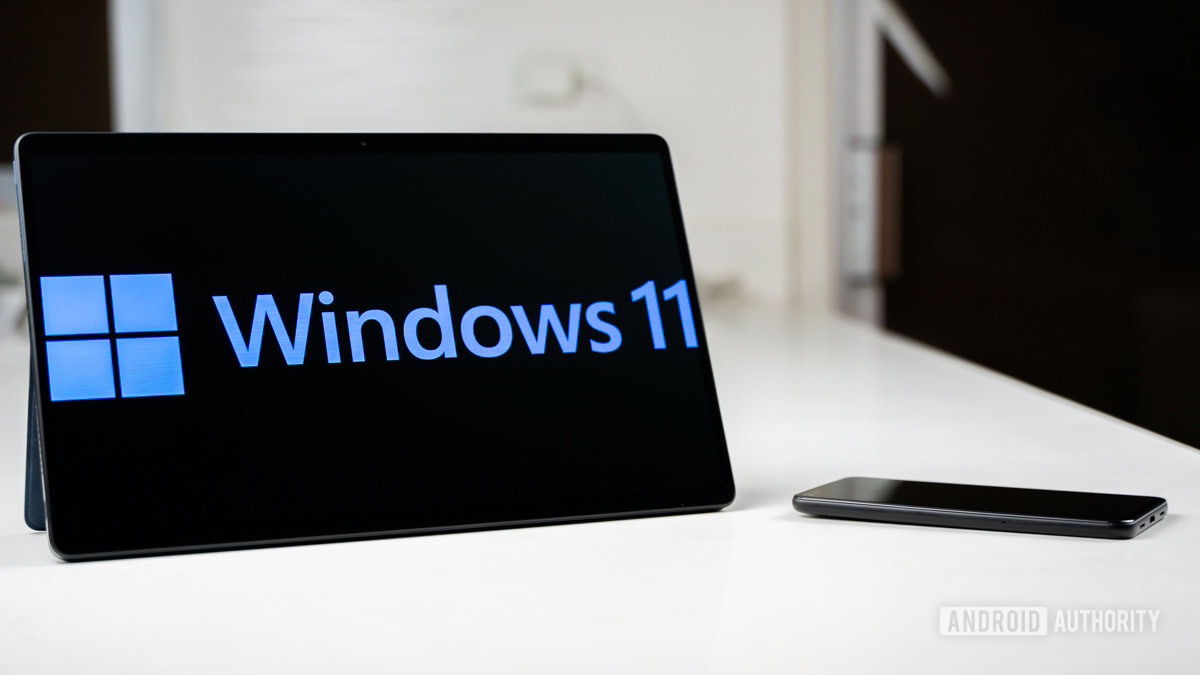
Windows 11 has some useful built-in features that few may be aware of. This includes a built-in video editor that is basic but surprisingly capable and is more than enough to edit videos to make them ready for social media quickly. There’s plenty you can do with this video editing app, and it doesn’t require a steep learning curve. Here’s how to use the Windows 11 video editor.
QUICK ANSWER
The Windows 11 Video Editor is a built-in video editing app that lets you crop, split, and splice videos and add text, graphics, 3D effects, video filters, background music, and custom audio clips. It's a comparatively basic video editor, but there's plenty you can do with it to make your videos look good.
JUMP TO KEY SECTIONS
What is the Windows 11 Video Editor?
Video Editor is a part of the Windows Photos app and comes pre-installed on a laptop or desktop computer running Windows 11. It succeeds the Windows Movie Maker from previous OS versions and has many more features. It lets you split, trim, and splice videos together. You can also add text, motion graphics, filters, background music, custom audio, title cards, and more. It’s an excellent app for basic video editing but doesn’t have multi-track editing features.
How to use the built-in Windows 11 Video Editor
How to open the Windows 11 Video Editor and create a project
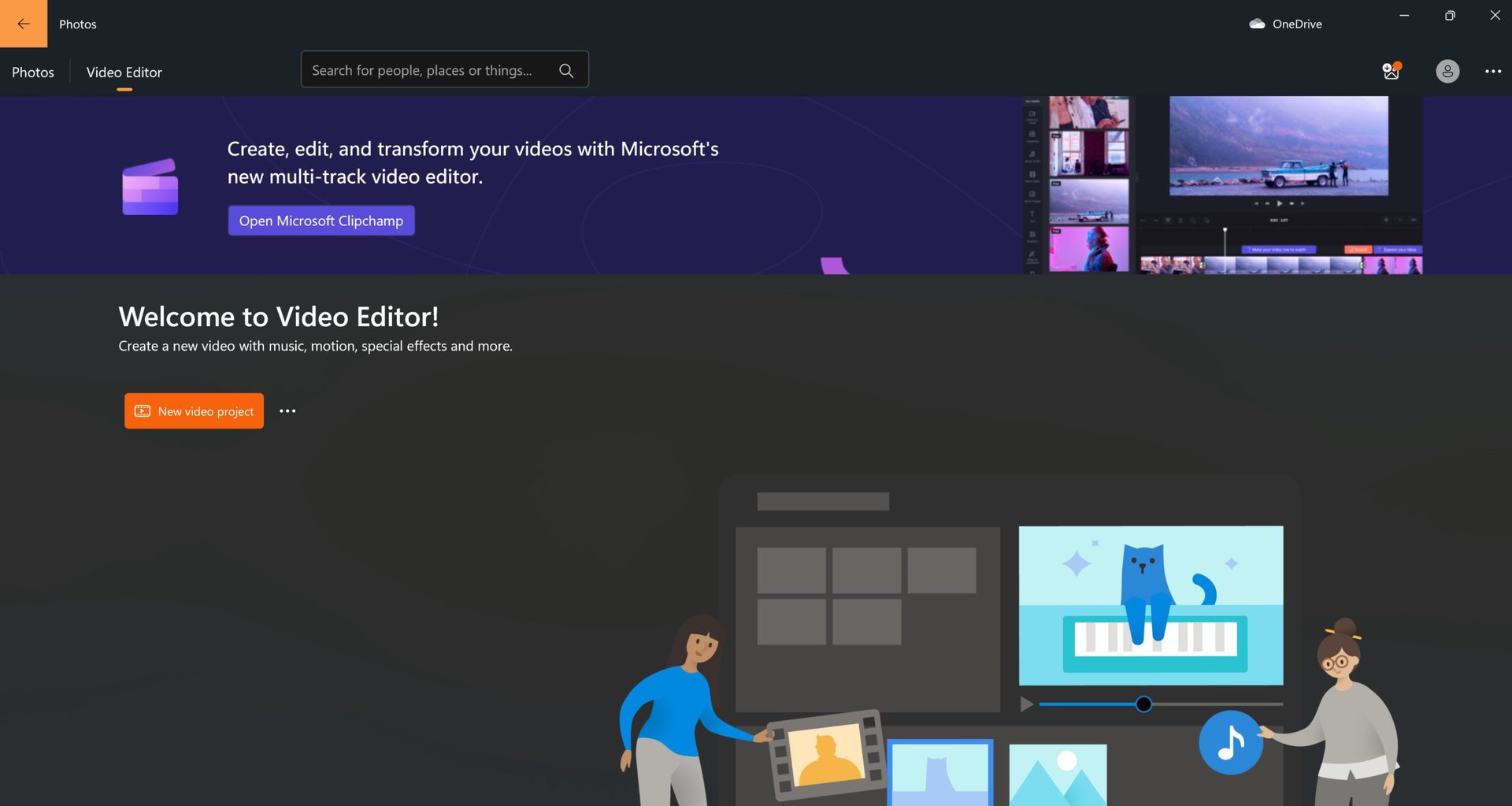
Use the search bar and type Video Editor to open the app. Click New video project and add a name for the file. The layout includes a project library, video player, and Storyboard section, which works as the timeline. Click the Add button in the Project Library window to import videos from your computer.
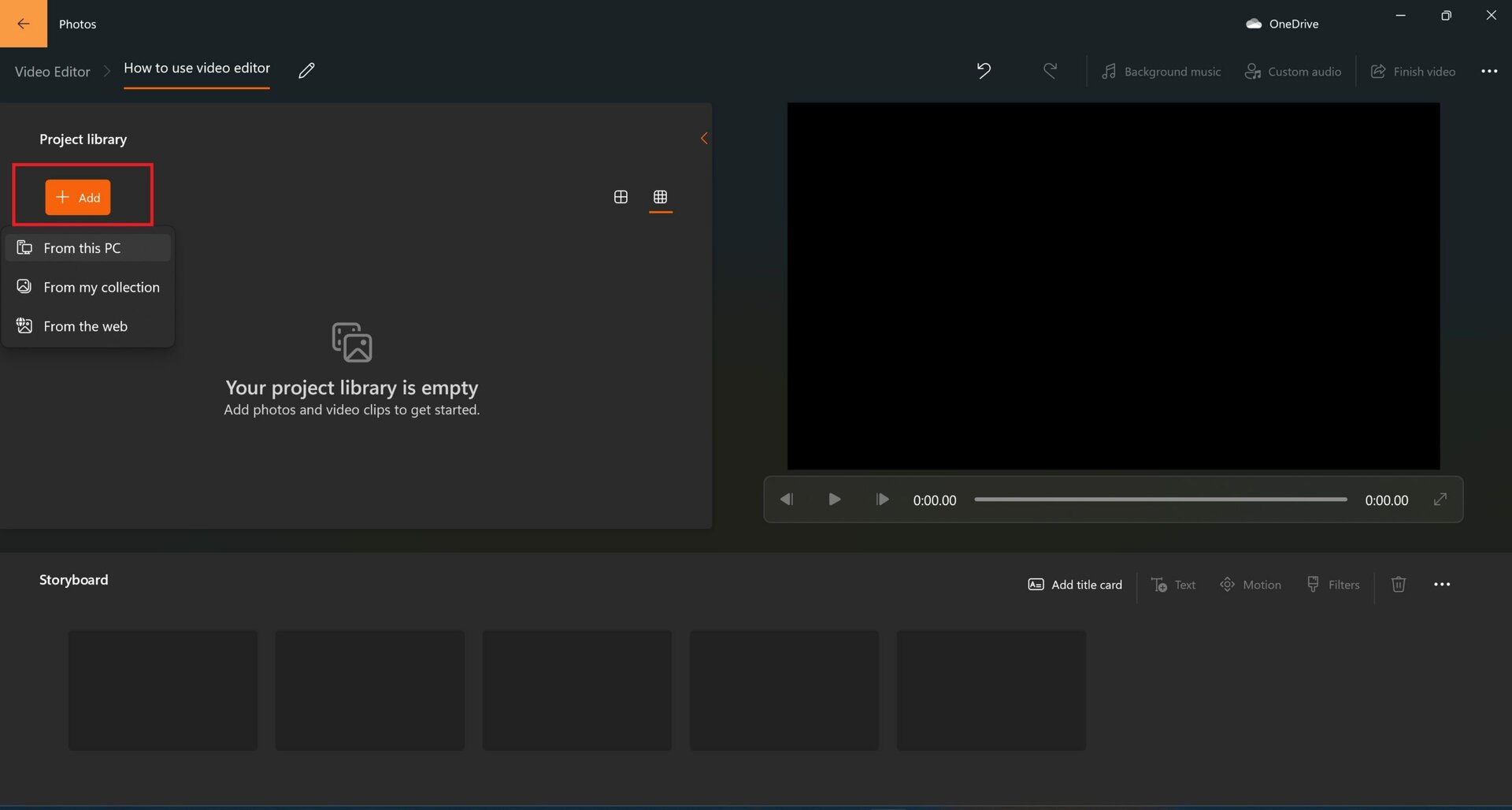
Once you’ve added videos to the library, you can drag and drop them into the Storyboard. Despite its basic nature, the app allows non-linear video editing. You can edit individual clips separately regardless of where they are on the timeline and move them around by dragging and dropping them before, after, or between other clips.
How to trim and split videos
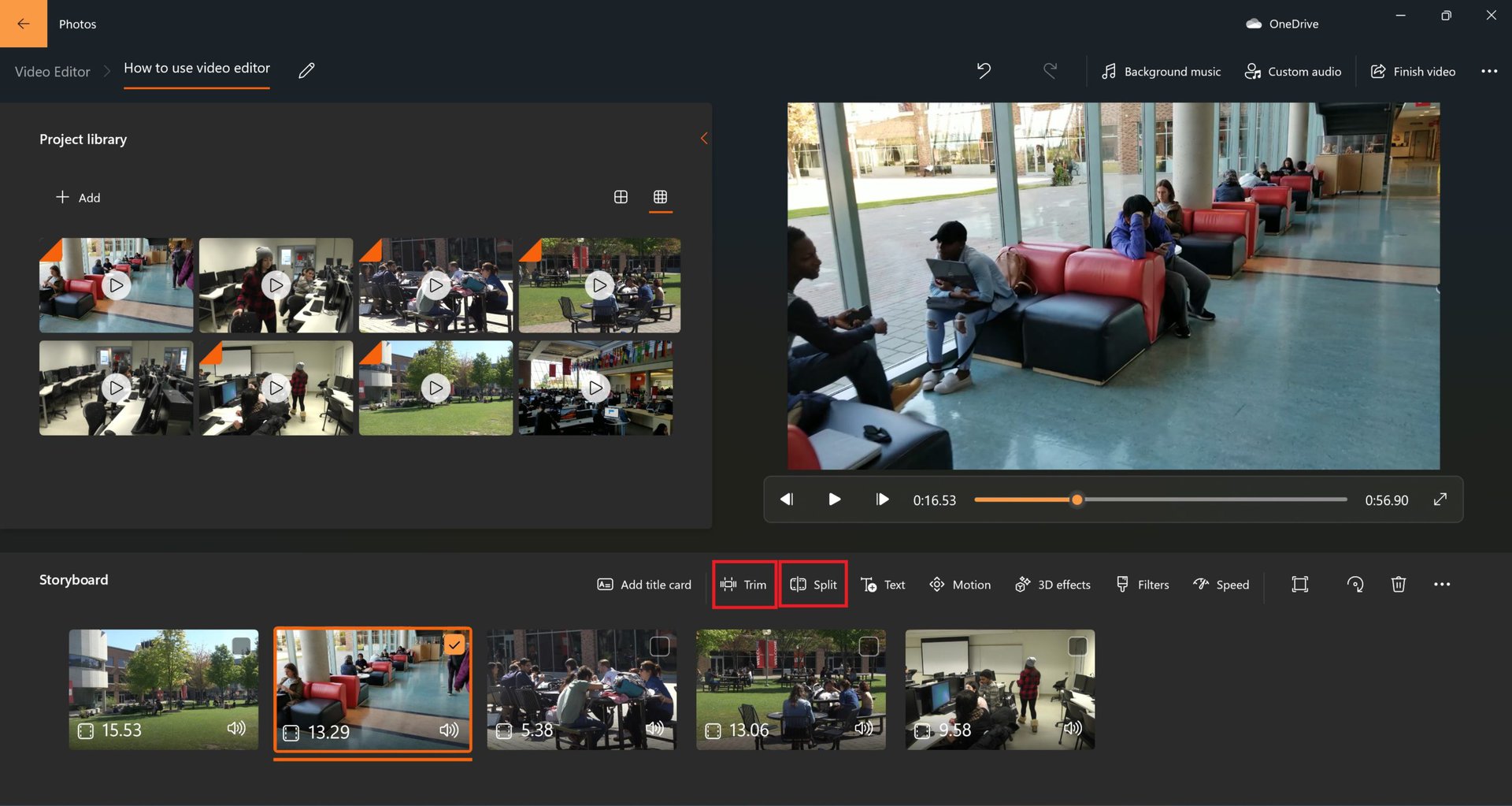
Click on Trim in the timeline options to crop videos. Move the two bars at the beginning and end of the clip to crop the video. You will see timestamps on the bar and the adjusted clip length so that you can be pretty accurate with your crop. Click Done once you’ve trimmed the video.
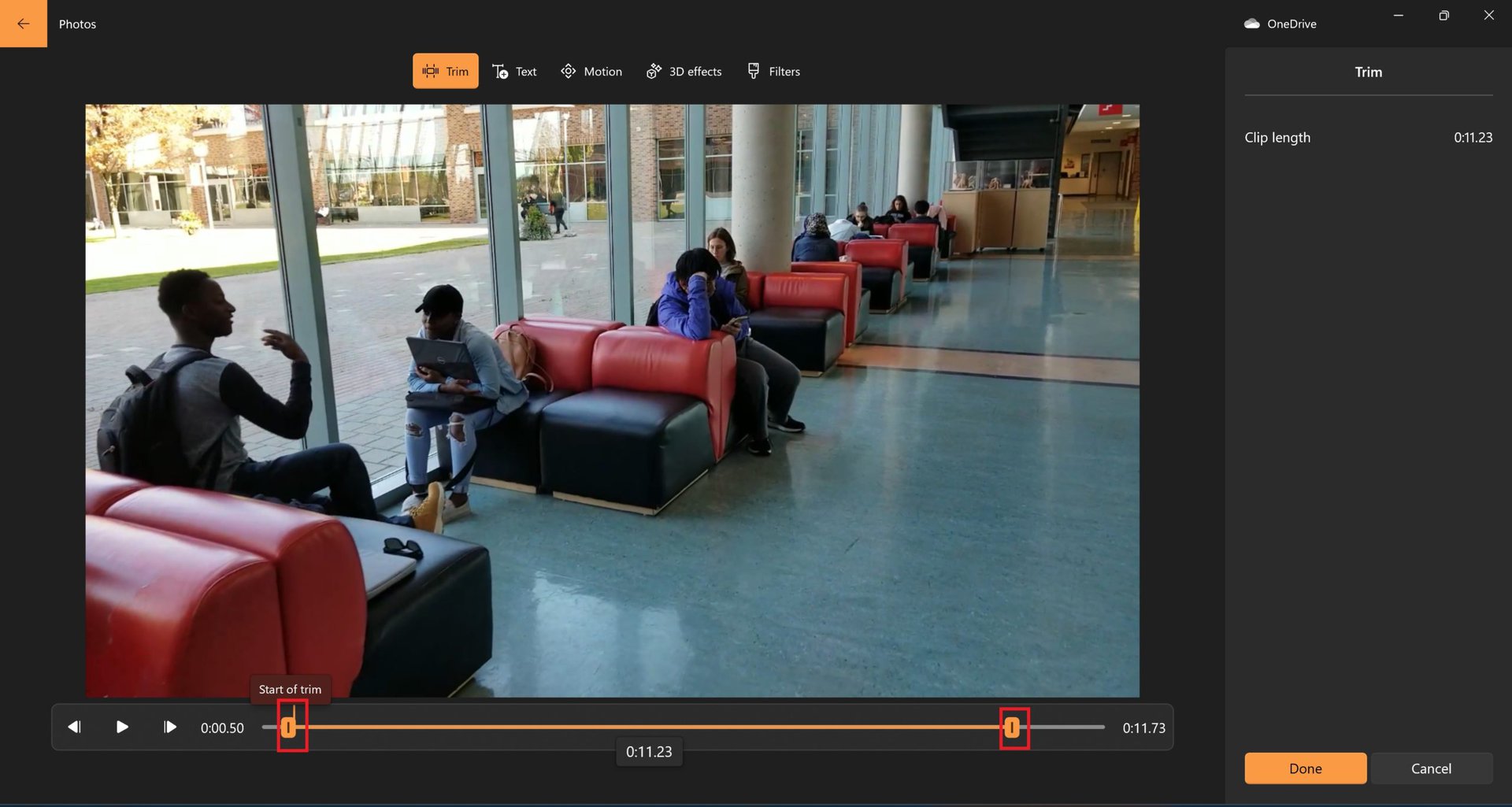
Click on Split to chop the video. Move the marker to the point in the timeline you want to split the video. The app provides timestamps and the durations for the two clips.
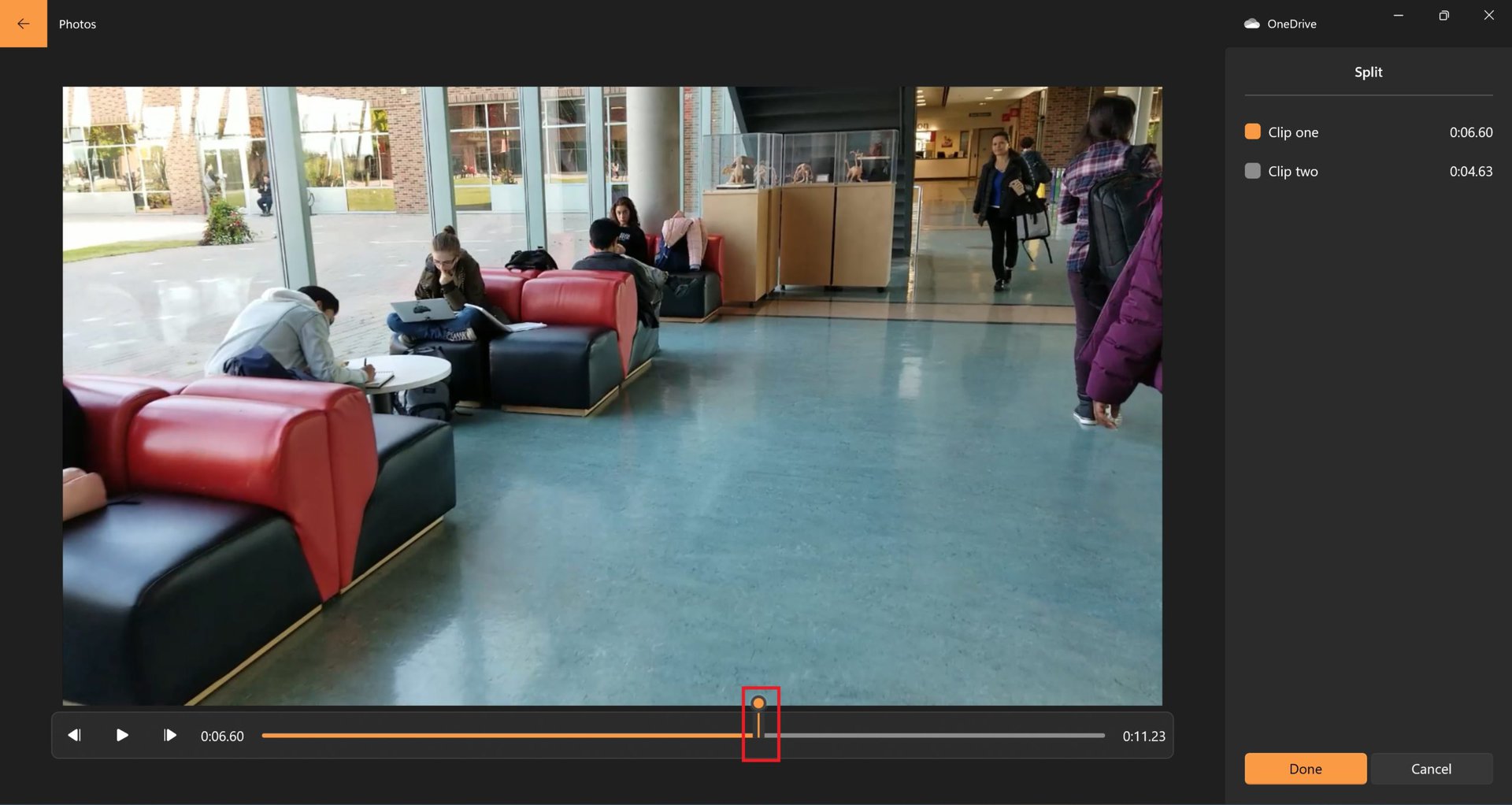
You will now get the split videos in your timeline as separate clips that you can edit individually. The Split function only lets you cut videos in two, so you’ll have to repeat the process if you want smaller pieces.
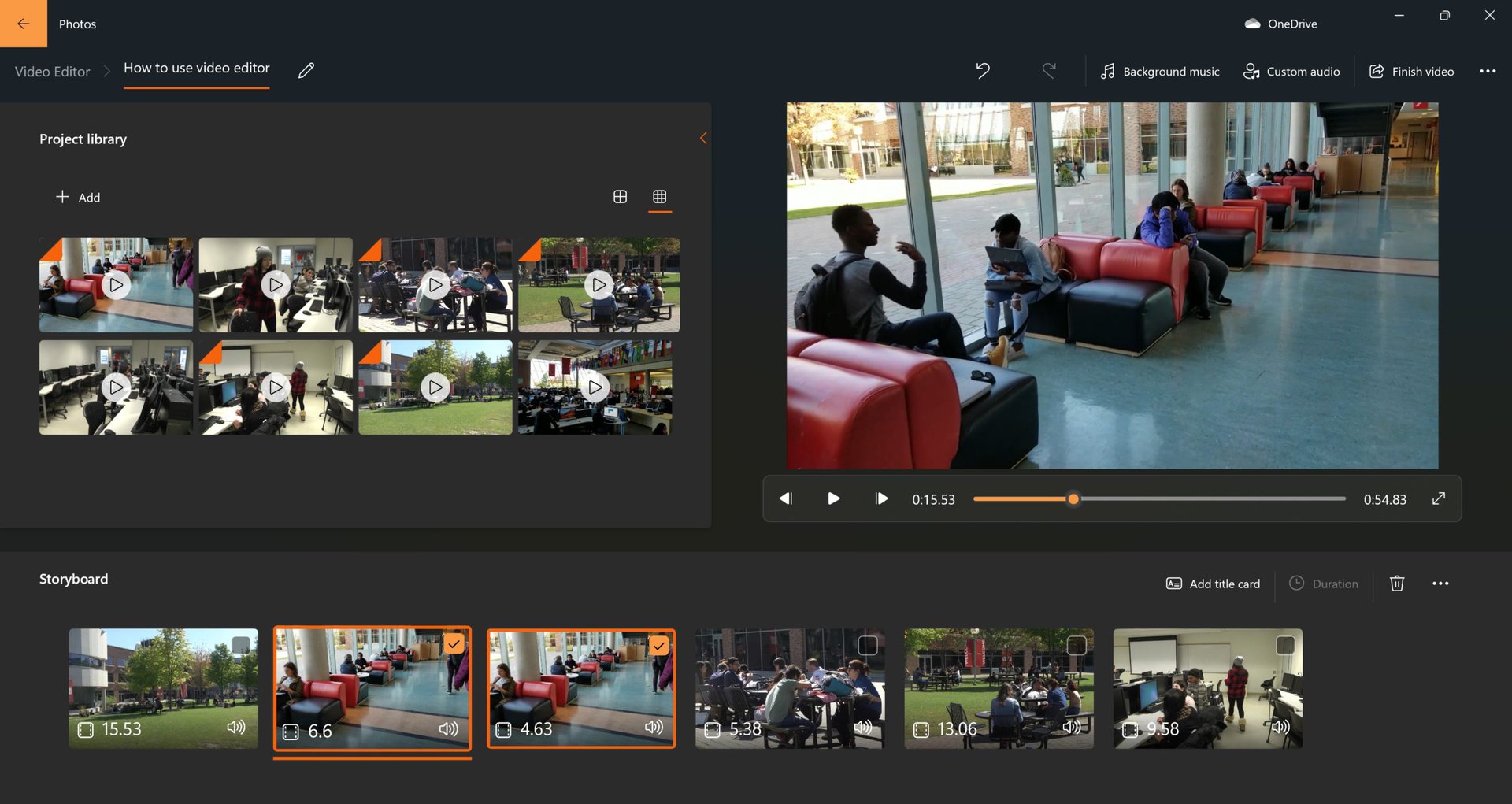
Drag and drop the clips in the timeline and place them where you want to put the final video together.
How to add text, motion graphics, and filters
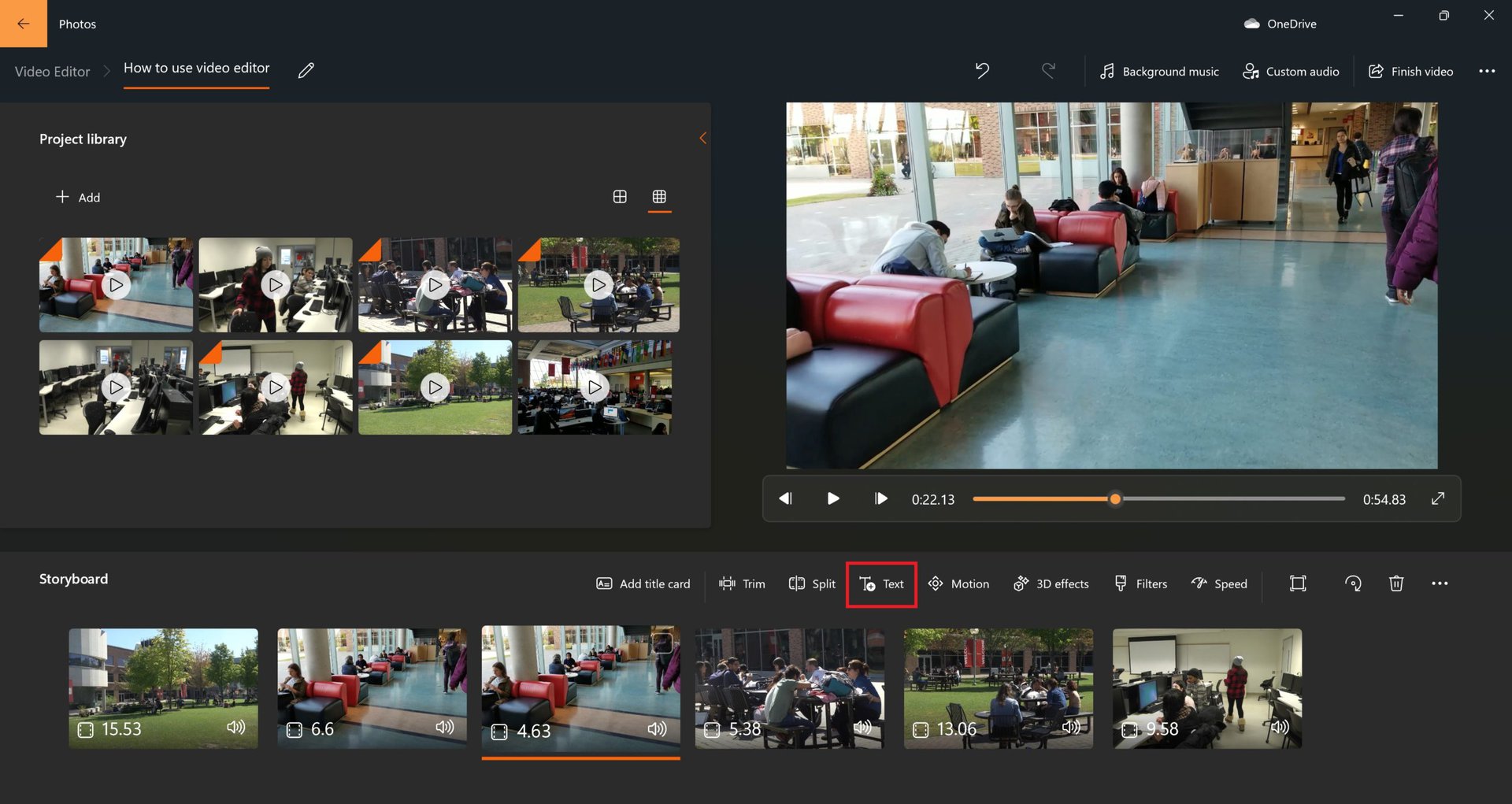
Click the Text button to add text to your clips. Place the marker where you want the graphic to start and type your text in the box at the top right corner.
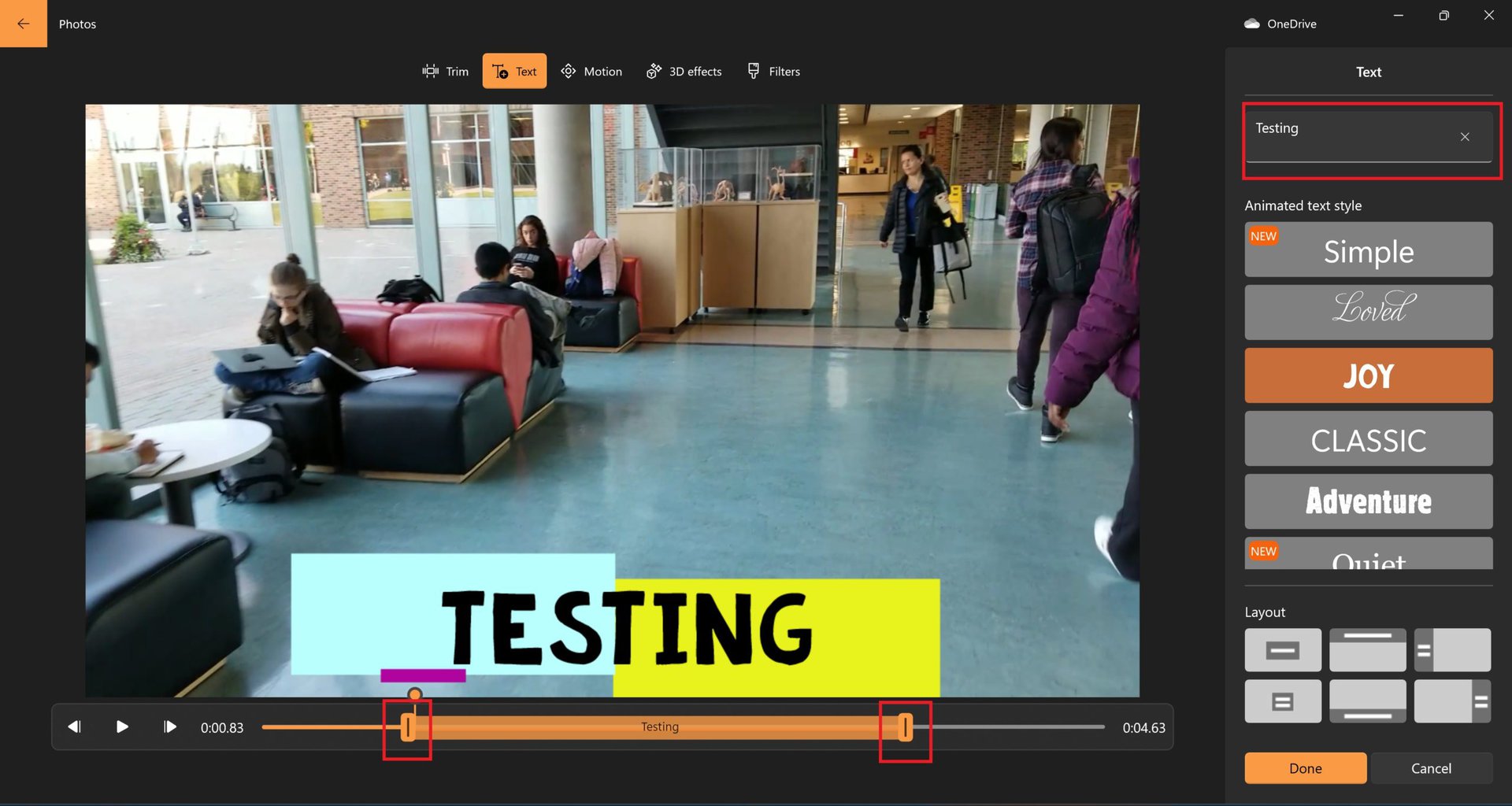
Use the timeline markers to adjust the text graphic’s duration. The app has quite a few text animations to choose from, and you can use the layout section to move the text around the clip.
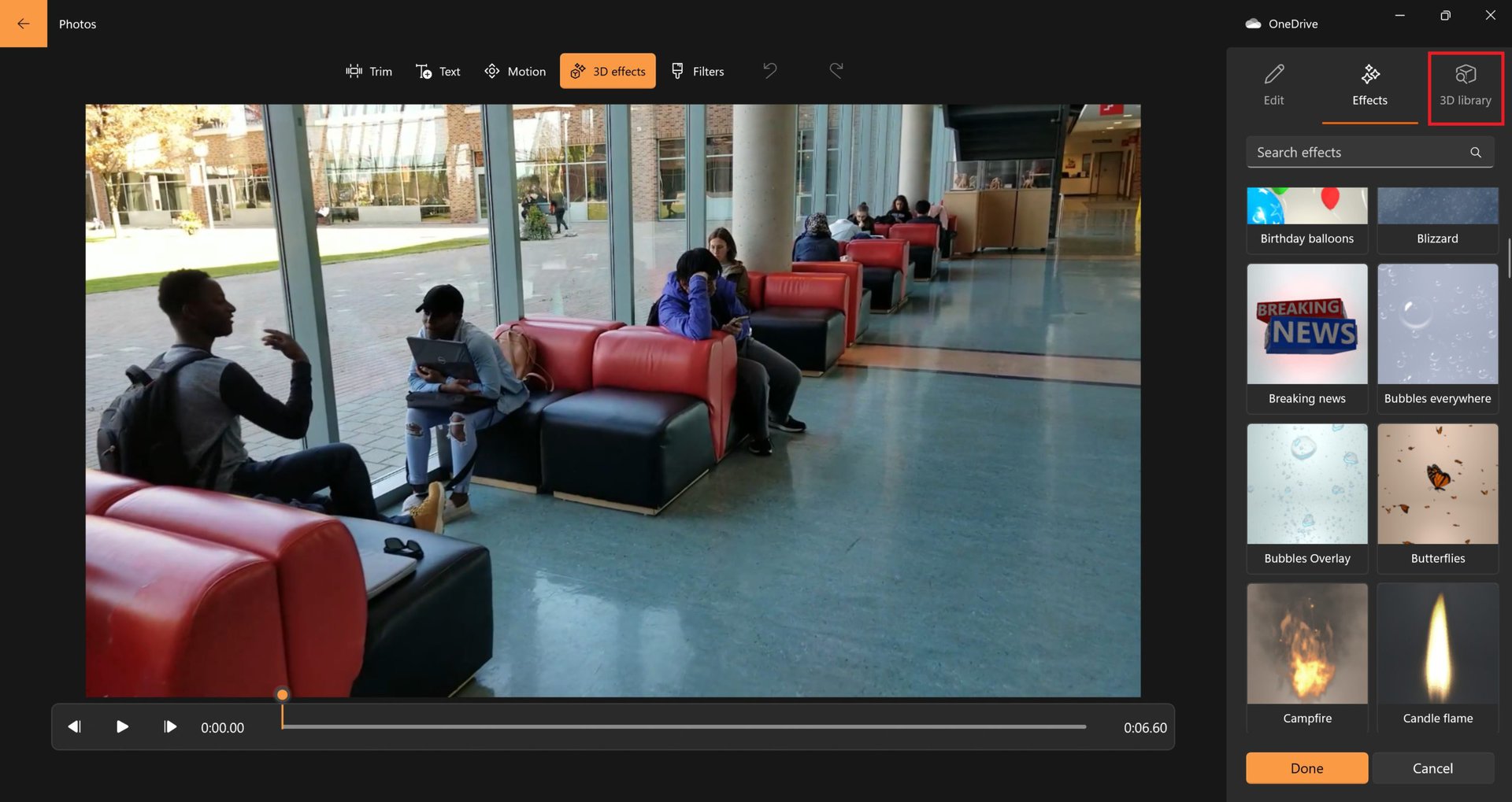
You can also add 3D Effects to a clip from a list of available options or download more from the 3D Library. After you select an effect, use the timeline markers to set the duration. You can also rotate, spin the graphic along the X and Y-axis, resize it, and move it using the on-screen controls.
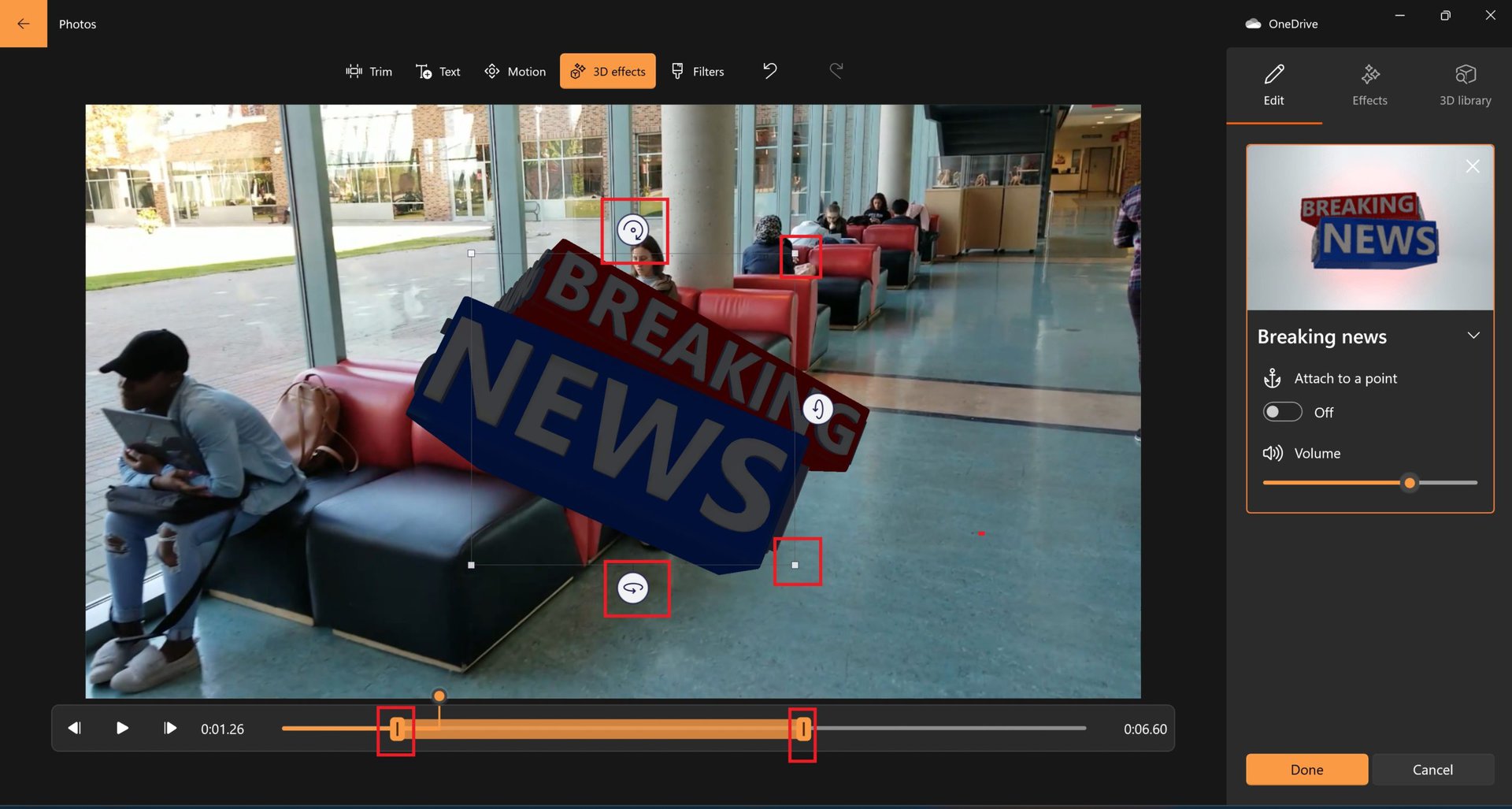
Some graphics also come with an audio component, and you can adjust the volume using the menu on the right-hand side. The available graphics aren’t the best-looking but can be a fun addition in a pinch.
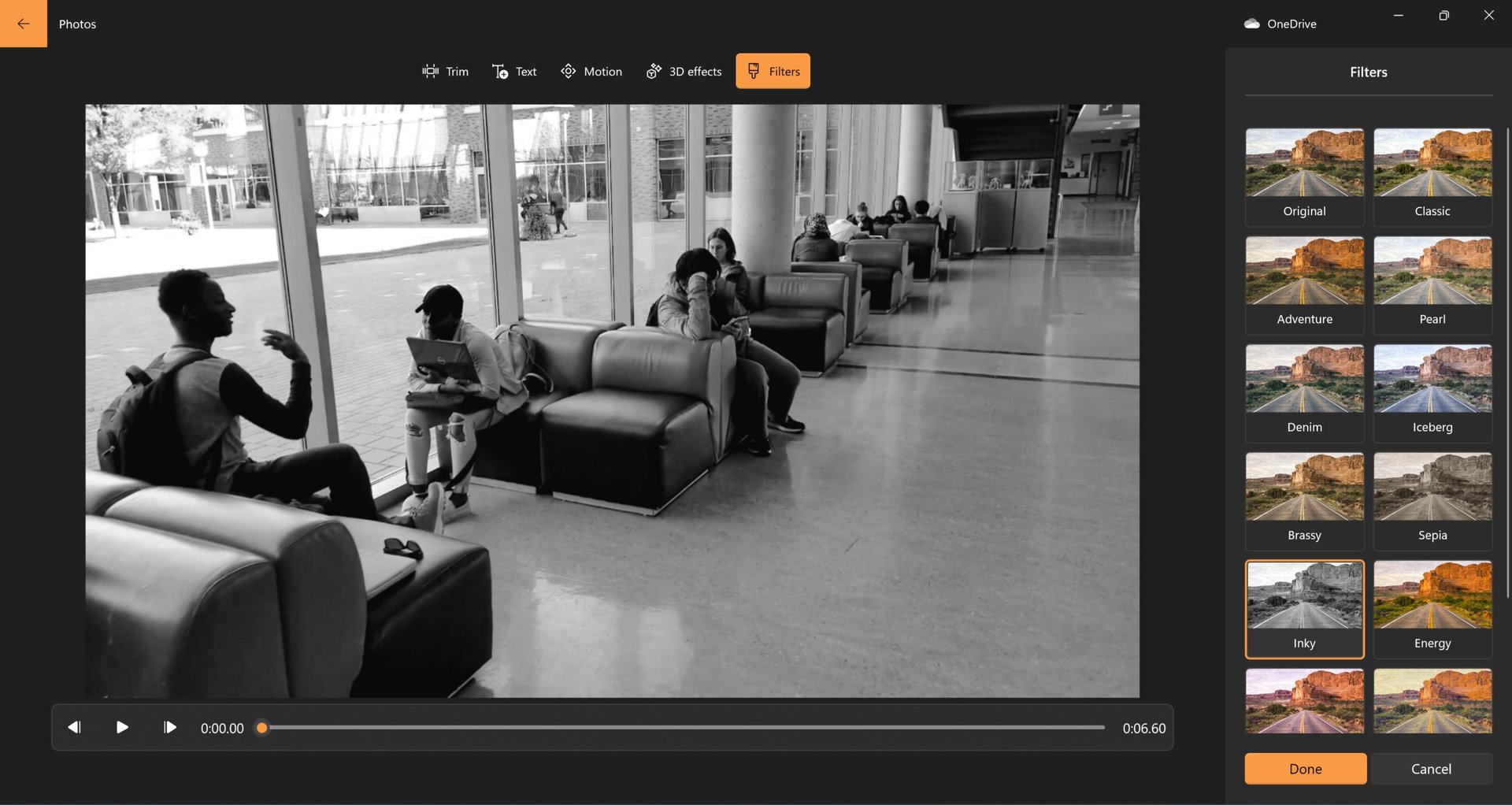
The Windows 11 Video Editor also comes with a decent list of video filters you can use to enhance the look of your video. If you plan to use images, use the Motion setting to add camera motion to pictures, so they don’t appear static in the final video clip.
Unlike multi-layer video editors, you won’t see a graphic layer on the timeline. If you want the text, graphics, and filters to carry over to the following clip, you must add them again.
How to add audio
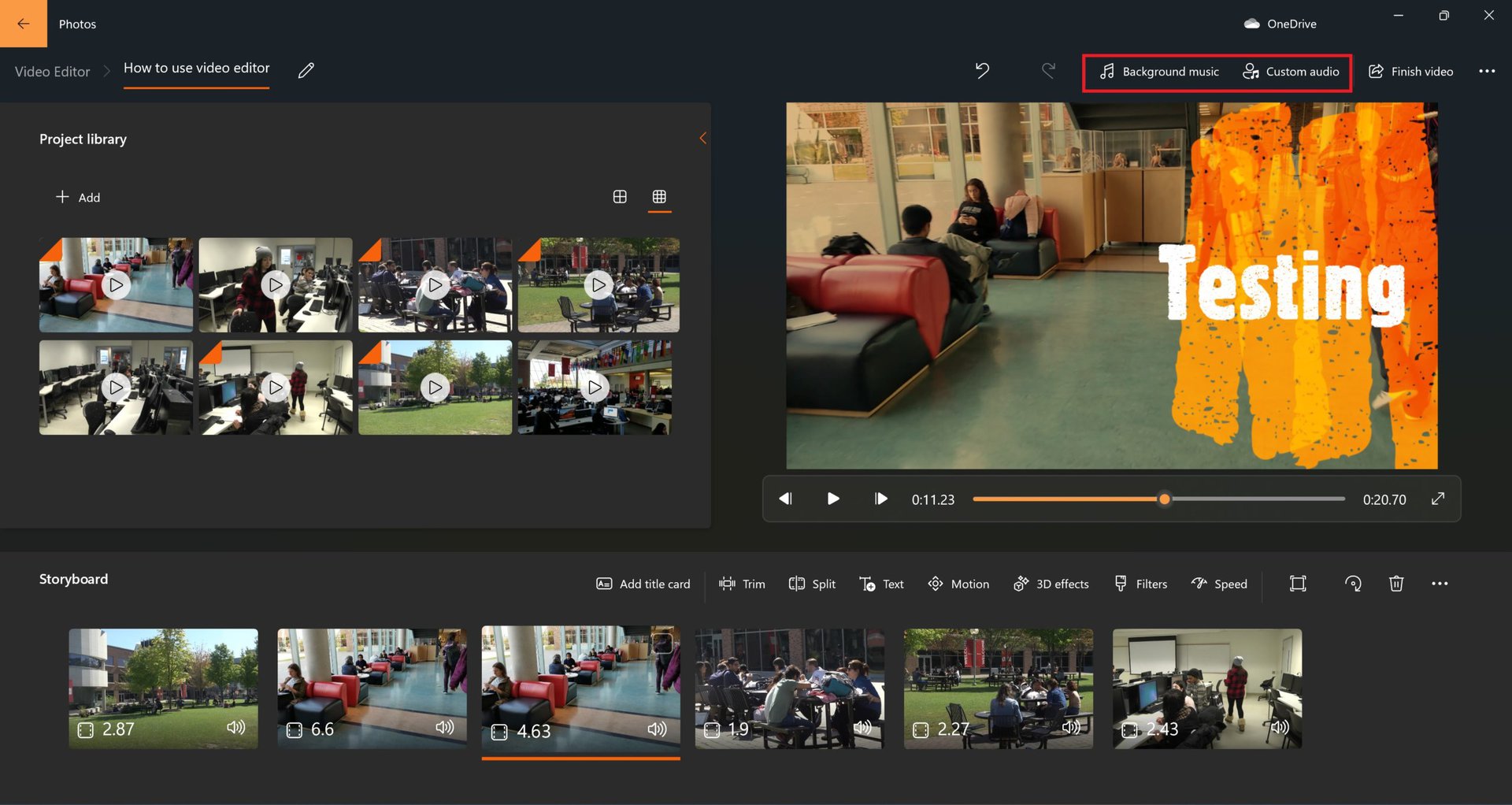
You can add background music for the entire video file by clicking on Background music at the top right corner.
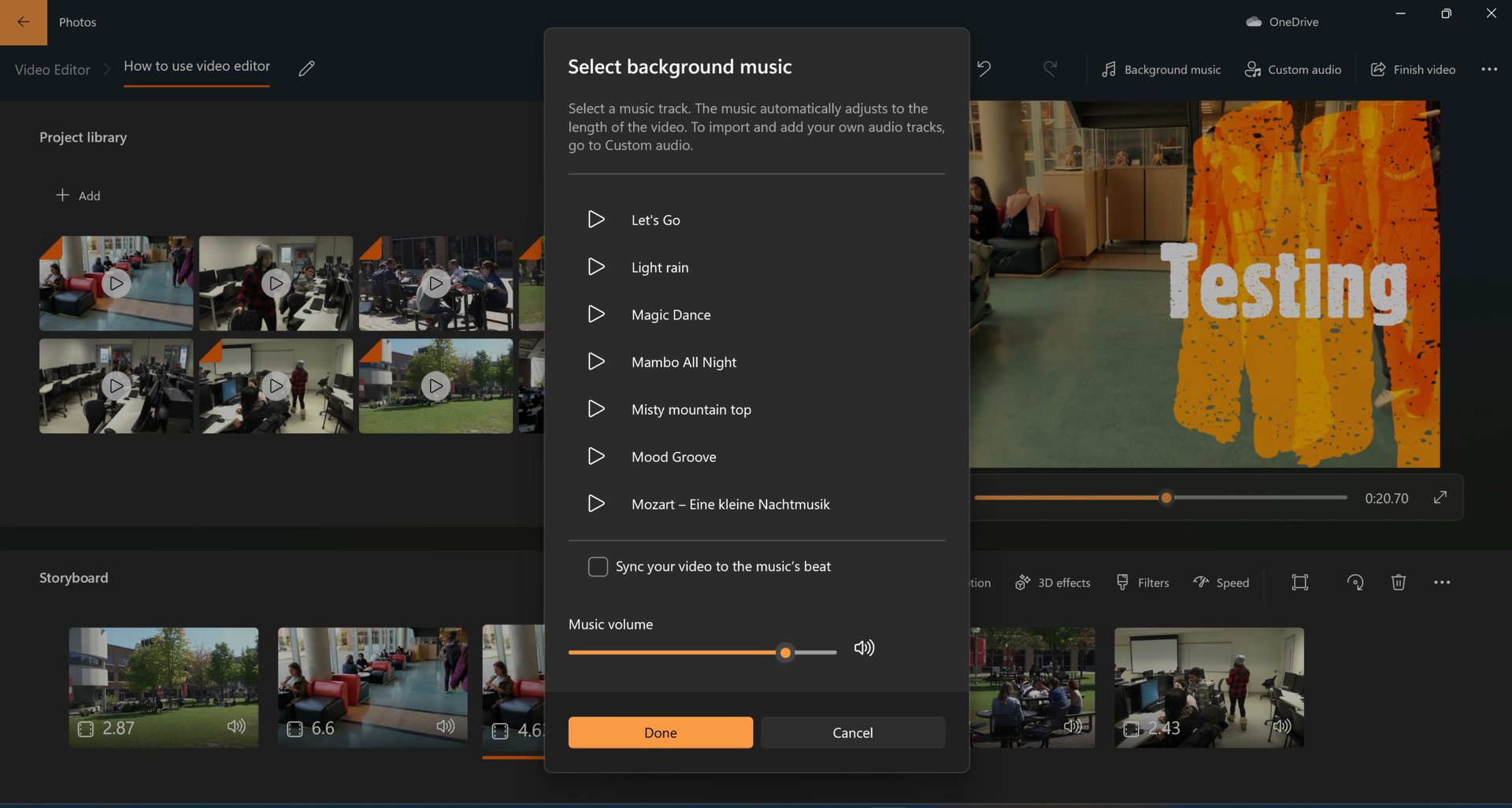
Select an option from the list, adjust the volume, and click Done. If you enable Adjust your video to the music’s beat, the app will automatically crop your clips to match the sound.
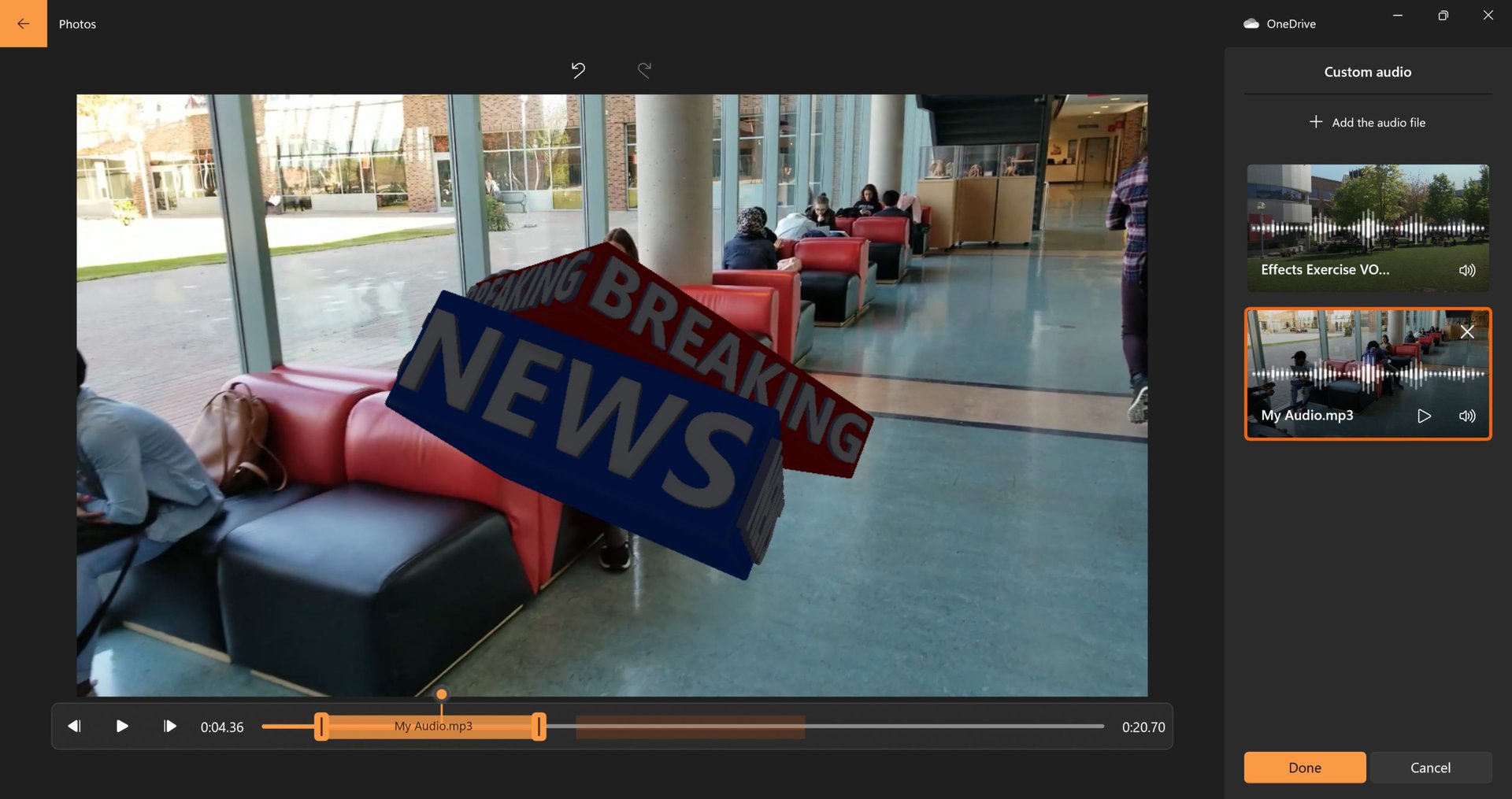
You can add custom audio for more granular control. Choose a clip, click Custom audio, and select Add the audio file to import audio clips from your computer.
You can add multiple clips to the timeline and adjust their duration. This is a great way to add voiceovers and music to only specific parts of the final video. However, remember that you can’t record audio using the app, so you’ll have to pre-record any narration or voiceovers and edit music clips before adding them to the video editor.
How to export a completed video file
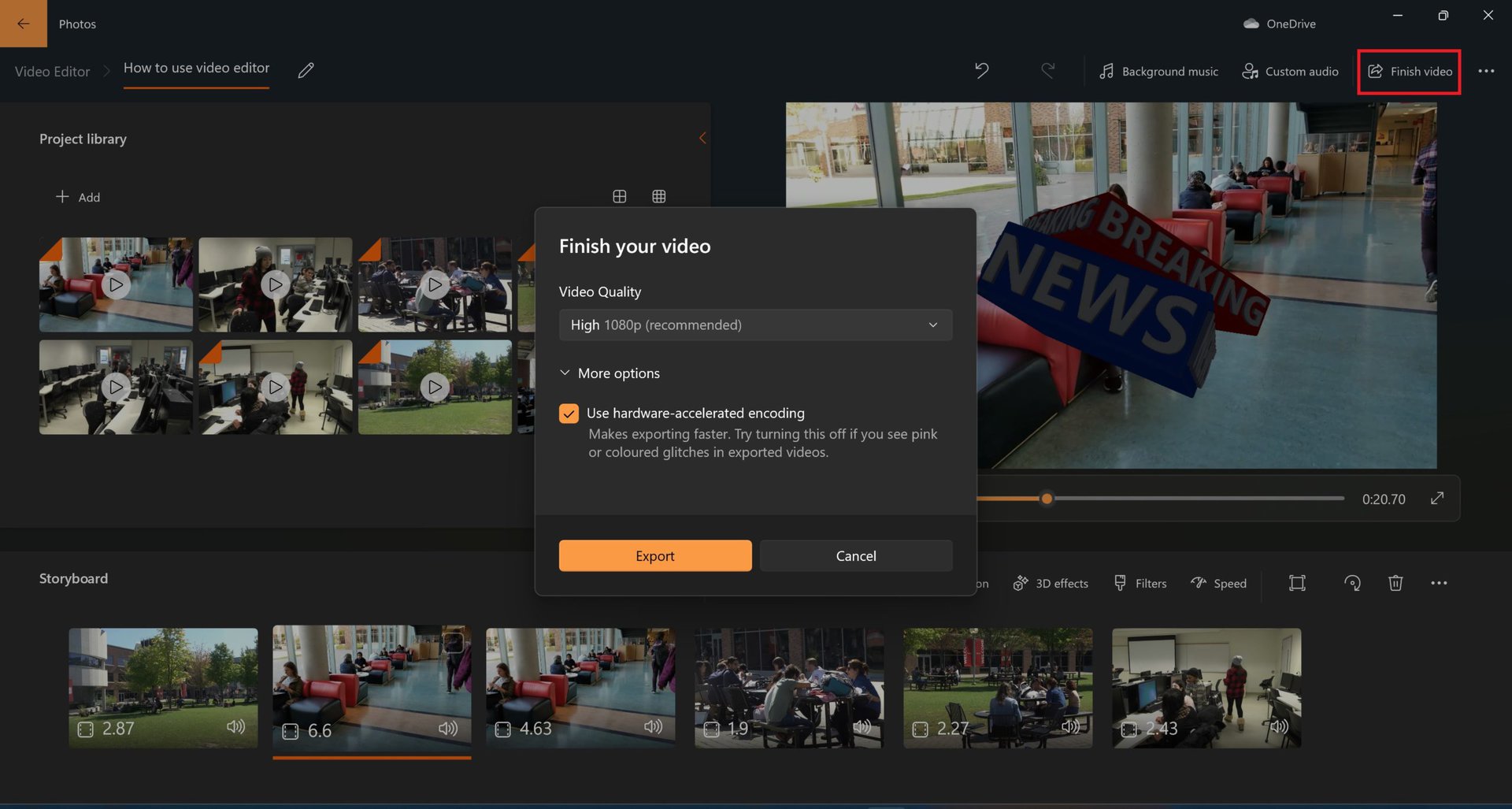
After editing your clips and putting them together, click Finish video at the top right corner. Set the video quality (1080p, 720p, or 540p) and go to More options to enable hardware-accelerated encoding. Click Export to save the video on your computer.
Other settings and features
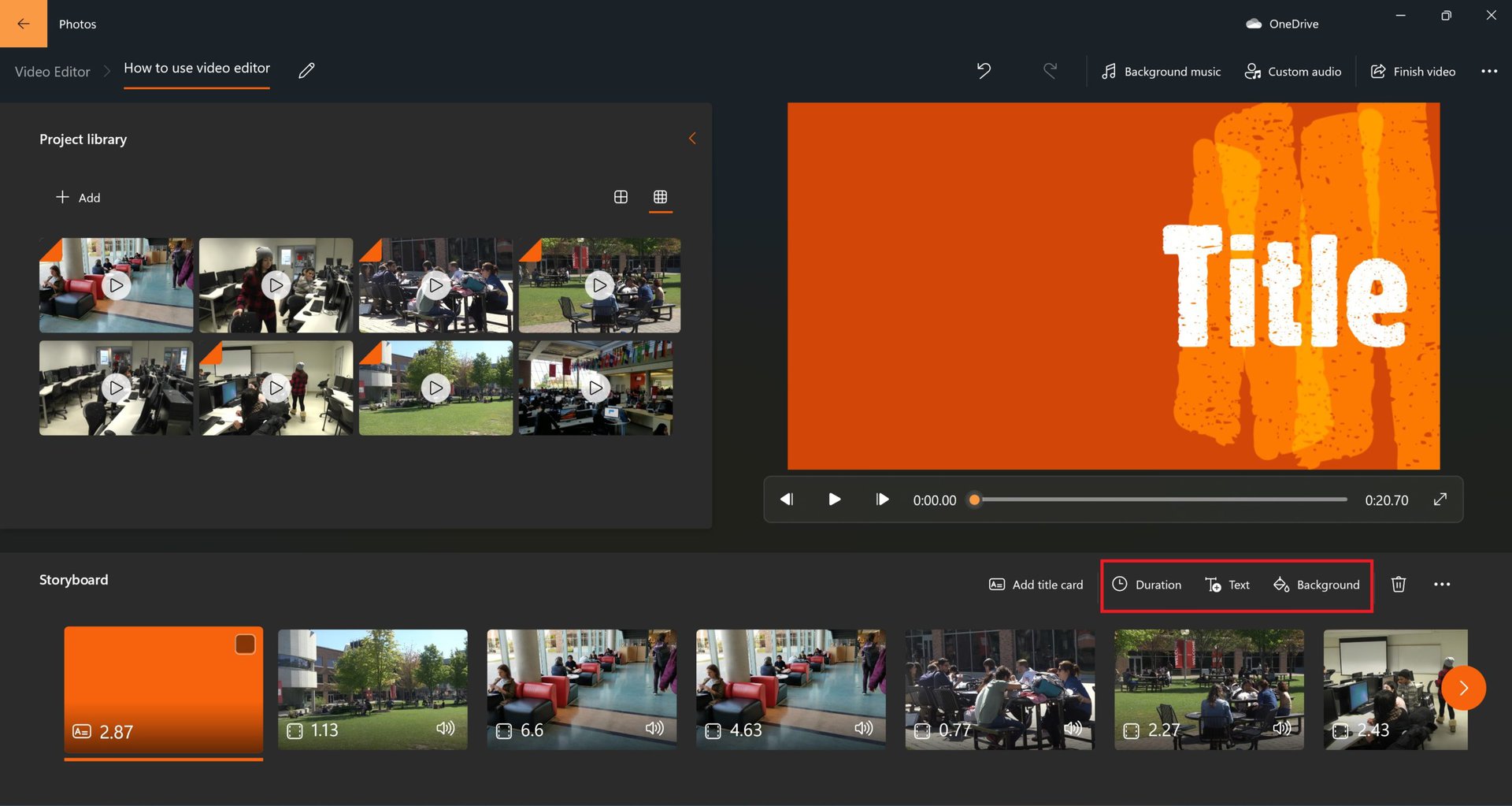
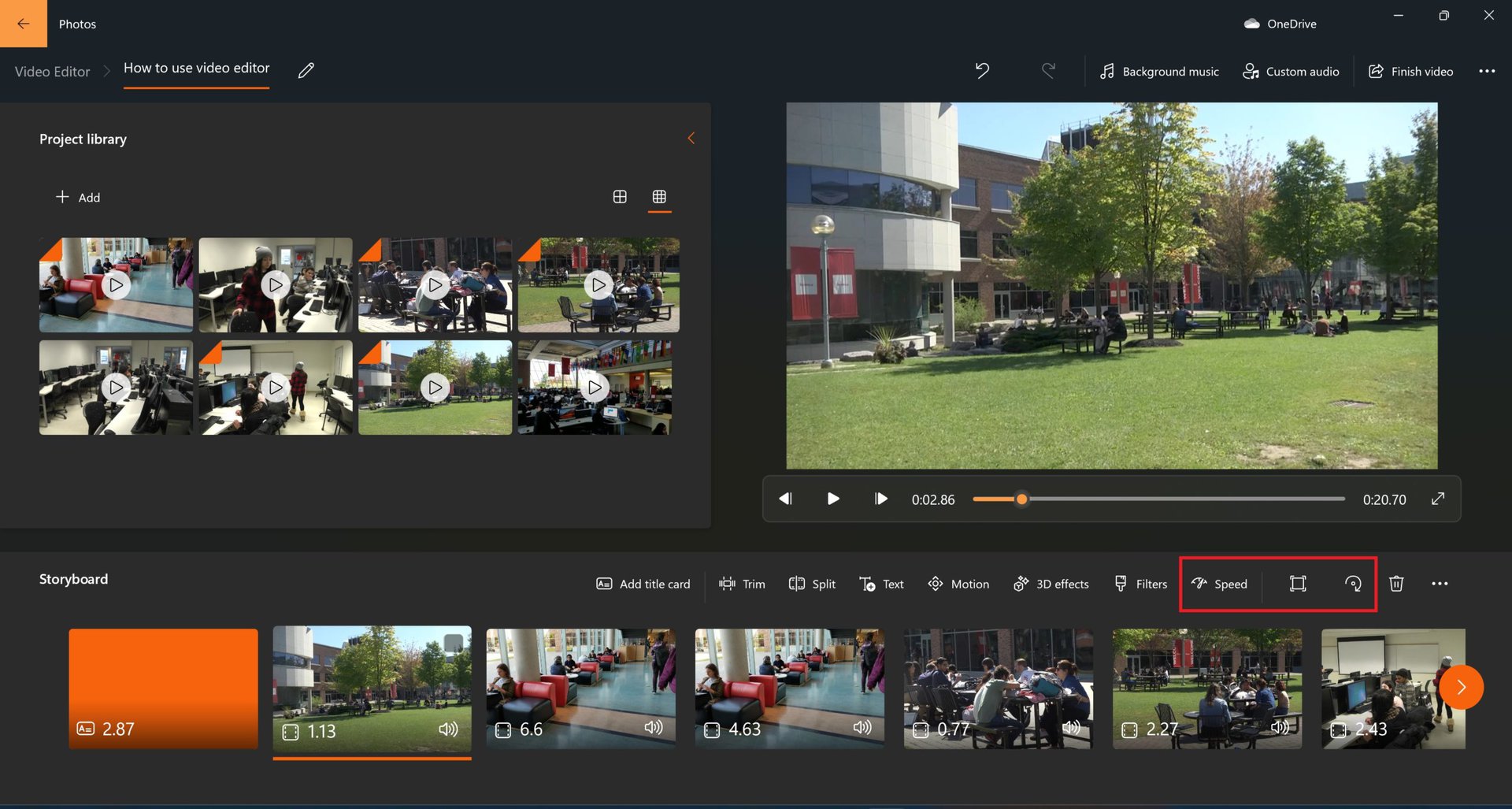
Other settings in the timeline include Speed, which lets you set the speed of a particular clip. You can slow it down to 0.02x or speed it up to 64x. You will see black bars on the sides of your clip if it doesn’t match the project’s aspect ratio. Click on the box icon next to Speed to adjust the clip’s aspect ratio automatically and remove the black bars. You can also rotate specific clips in the storyboard.
FAQs
Yes, the Windows 11 Video Editor is free and is already available on your Windows 11 device. Microsoft has a more advanced Windows editor you can download from the Microsoft Store called Clipchamp.
Click on the three horizontal dots icon at the top right corner (next to Finish Video), go to the mentioned aspect ratio (16:9 landscape by default), and change to another option. Choices include 4:3 and a switch to the portrait orientation.
You will have the option to choose the folder you want to save the video in when you export the video.